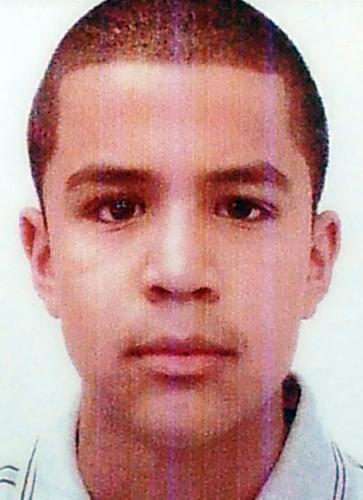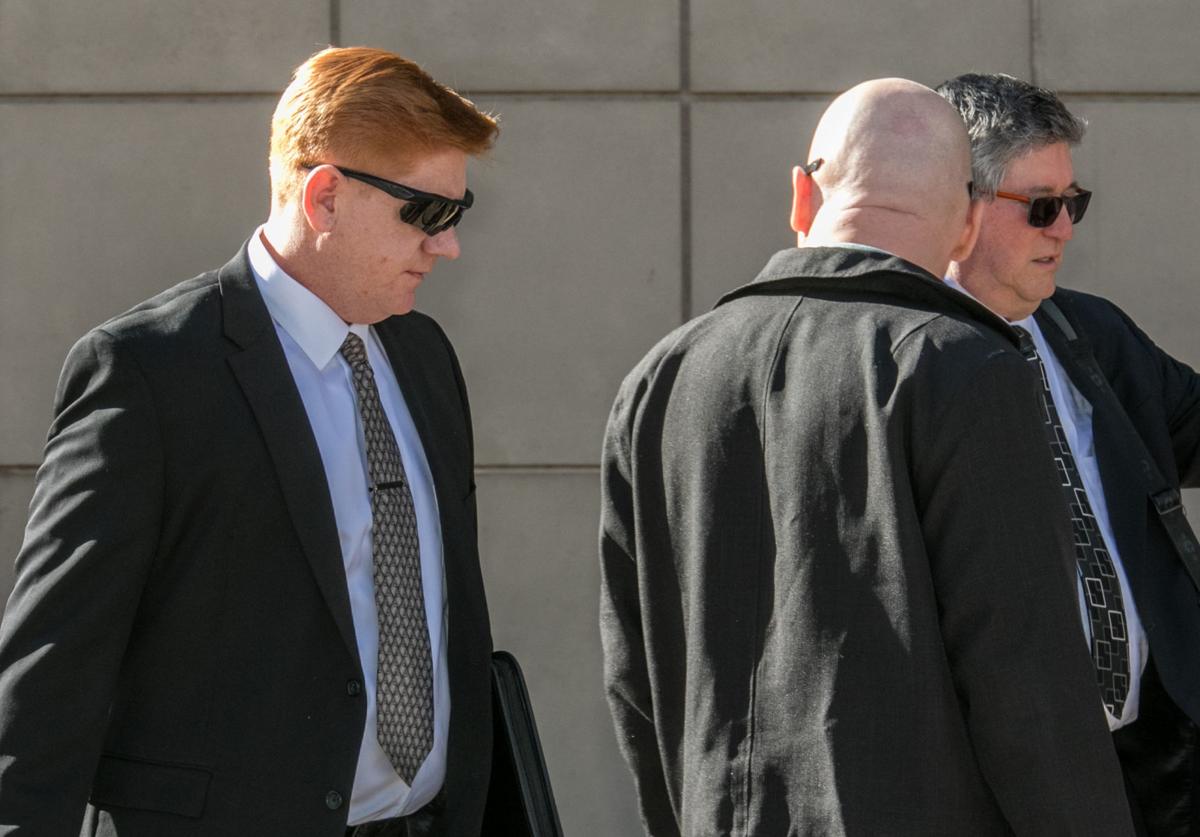For the defense it’s simple: The border is a dangerous place and being a Border Patrol agent is a dangerous job.
As they presented their witnesses during the past week, defense lawyers focused on that message and their position that the night Lonnie Swartz shot through the border fence and killed Jose Antonio Elena Rodríguez, he was just doing his job and protecting himself and fellow agents.
Closing arguments are expected either Monday or Tuesday in Swartz’s trial on second-degree murder charges, which began March 20 in U.S. District Court in Tucson.
Part of the defense’s case has also been to point out what its expert witnesses identified as flaws in the investigations on both sides of the border; what the federal agency’s use-of-force policy actually tells agents to do; and the validity of a 3-D animation video that prosecutors presented showing the positions of Swartz and border rock throwers at the time of the 2012 shooting.
In a surprise move, Swartz testified on Monday about how the incident unfolded. The 43-year-old agent said he can’t remember much of what happened after he fired his weapon into Mexico, killing 16-year-old Elena Rodriguez.
“I’ve tried to remember ever since that night, I don’t know why,” he told Sean Chapman, one of his two attorneys. “I’ve struggled with this for 5ƒ years. I want to remember. It’s a piece of my life wiped away and I can’t get it back.”
Use of force
While prosecutors have said Border Patrol agents are trained to use deadly force as a last resort — only when it’s reasonable and necessary — Chapman has countered throughout the trial that agents have a wide array of options based on the totality of circumstances.
“But sometimes, unfortunately, deadly force has to be the first resort,” Chapman has said.
In part, this is what the 2010 policy the attorneys have been referring to says:
- “Authorized officers/agents may use deadly force only when necessary, that is, when the officer/agent has a reasonable belief that the subject of such force poses an imminent danger of death or serious physical injury to the officer/agent or to another person.
- “If feasible, and if to do so would not increase the danger to the officer/agent or others, a verbal warning to submit to the authority of the officer/agent shall be given prior to the use of deadly force.
- “Discharging a firearm at a person shall be done only with the intent of stopping that person from continuing the threatening behavior that justifies the use of deadly force.”
“If means, intention and opportunity are present, then the agent is authorized to use deadly force,” testified Peter Hermansen, a former Border Patrol agent involved in crafting the 2010 use-of-force handbook.
He said there’s nothing in the policy that says agents must retreat when being pelted with rocks; instead, they are supposed to use their training to help them react.
There’s also no policy that says they must take cover, he said in response to Chapman’s questions. “You assess the situation to understand your position, the position of others.” Often, he added, “officers are asked to make split-second decisions that are reasonable under very unreasonable circumstances.”
Swartz testified that the night of the shooting he heard rocks hitting the fence, heard a fellow agent said he had been hurt and another agent tell a Nogales police officer that his police dog had been hit. All of that combined with the fact that one of the alleged drug smugglers climbing the fence had a large knife in his pocket, he said.
During his testimony, Hermansen also mentioned a 2014 memo on “use of safe tactics and techniques.” Mike Fisher, then chief of the Border Patrol, issued it “under a lot of pressure to address the impression that law enforcement was using force more than necessary,” Hermansen said. “It was meant to remind agents to think about their training and about all the tools in their toolbox.”
The memo reminded agents to avoid, whenever possible, placing themselves in a position where they have no alternative to using deadly force and to not discharge their firearms in response to rock throwers unless they pose an imminent danger of death or serious injury. Agents should seek cover or distance themselves from the immediate area of danger, it said.
But Swartz wouldn’t have had this memo available to him back in 2012, Chapman noted.
Investigation
missteps alleged
In his opening statement, Chapman told jurors that the federal indictment against Swartz shouldn’t have been filed in the first place.
“Flaws in the investigation on both sides of the border impact the integrity and reliability of the evidence,” he said.
It’s important to consider the mistakes, he said, because a federal agent is on trial.
Chapman and co-counsel Jim Calle questioned several expert witnesses seeking to prove unreliability of the evidence, from the surveillance footage that has been shown over and over during the past several weeks, to the way Mexican officials conducted their investigation.
Prosecutors have used an animation of 3-D data, surveillance video and photographs to reconstruct the scene. In it, James Tavernetti, a forensic animator, used icons to demonstrate how Swartz and the rock throwers moved through the scene because he didn’t have enough information to show precisely how they moved their heads and arms, he said.
Prosecutors spent several hours over two days going over how Tavernetti created the animation because the defense had argued against the admission of the video, saying it was unreliable.
Grant Fredericks, the defense’s forensic video analyst, testified that the size of the file from the surveillance cameras given to him and Tavernetti was too small. It was missing 75 percent of the original pixels, he said, which creates a problem with redundancy as the system uses the same information from previous frames when the compression algorithm doesn’t detect enough of a change in the scene.
“When you magnify it, you get a sense of how much information is missing, how very limited the number of pixels are,” he said, as he showed a clip of a video that shows a lot of the screen in black, meaning information was missing at that particular moment. The judge allowed the defense’s clip to be admitted for demonstrative purposes but not as part of the evidence the jury will consider.
Fredericks and Eugene Liscio, an expert on 3-D reconstruction, also testified that the footage from the infrared camera is unreliable because of its blurriness and can give the impression of movement when there is none.
“Because of the quality of the evidence, the end result is very subjective,” Liscio testified.
Another key point in the trial has been whether Elena Rodríguez was still alive when Swartz changed his position and continued to shoot, reload and shoot again. Stuart James, the defense’s forensic scientist, said based on the available evidence he cannot say whether there was movement as the teen was falling or already on the ground.
“My opinion on blood spatter has to be conservative due to the few photos, no samples of blood, no measurements,” he said. Mexican officials did not take blood and tissue samples from the wall to examine.
One of the last witnesses for the week, Gary Rini, briefly testified about missteps he had observed during the investigation, including Border Patrol vehicles driving through the scene.
The prosecution did not have any questions for him.
The government’s position is that Swartz fired 16 shots through the fence — 10 of which hit Elena Rodríguez in the back and head — while the other agents and officers at the scene instead sought cover.
“How did you know they were in danger?” Assistant U.S. Attorney Wallace Kleindienst asked Swartz about the other agents.
“We were all in danger sir,” Swartz responded. “It’s dark, it’s low light ... I don’t need to be hit by a rock, I don’t have to look up and see the size of the rocks,” he said, repeating what Chapman has said throughout.
He had to act quickly, Swartz said. “I only had seconds to stop the threat, sir,” and he “elected to protect myself, my partner and the officer.”
After closing arguments, Judge Raner Collins will issue instructions for the jury to begin deliberating.







